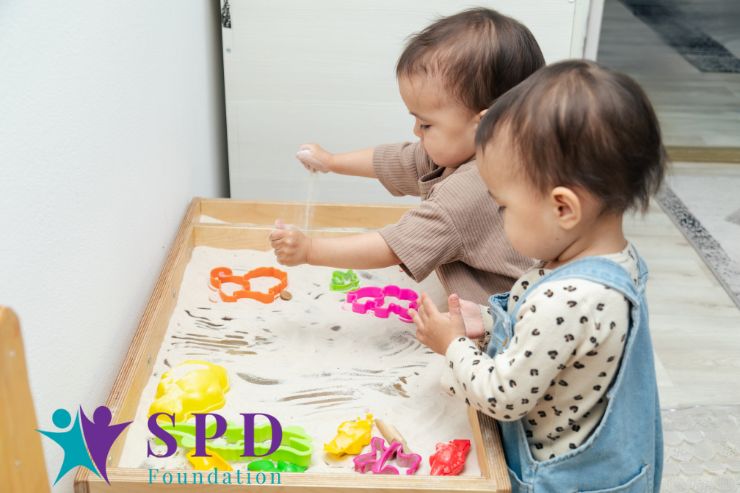Sensory Processing Disorder occurs when the brain encounters difficulties in processing sensory inputs, leading to a “neurological traffic jam.”
This disruption affects an individual’s ability to perform routine tasks and respond appropriately to sensory information.
Symptoms of SPD manifest in a wide spectrum, often making it challenging for those affected to participate in daily life without significant difficulty.
Statistical Insight into SPD

Research underscores the prevalence of SPD among children:
- A 2004 study by Ahn, Miller, Milberger, and McIntosh reported that approximately 5% of children encounter daily challenges due to SPD.
- Further research by Ben-Sasson, Carter, and Briggs-Gowen in 2009 indicated that around 16.7% of children experience sensory symptoms significant enough to interfere with everyday activities.
Symptomatology and Impact of SPD

Individuals with SPD may exhibit hypersensitivity (over-responsiveness) to sensory stimuli such as light, sound, and touch, finding these sensations overwhelming. Conversely, some may show hyposensitivity (under-responsiveness) and barely react to pain or temperature extremes.
These sensory issues can lead to difficulties in motor coordination, social interactions, and academic performance in children, and can extend into adulthood if not addressed, affecting professional achievements and relationships.
Misdiagnosis and Recognition Challenges

SPD often goes unrecognized and is sometimes misdiagnosed as other behavioral or developmental disorders like ADHD. This mislabeling can lead to inappropriate treatment strategies that do not address the underlying sensory issues.
These difficulties put children with SPD at high risk for many emotional, social, and educational problems, including the inability to make friends or be a part of a group, poor self-concept, academic failure, and being labeled clumsy, uncooperative, belligerent, disruptive, or “out of control.” Anxiety, depression, aggression, or other behavior problems can follow. Parents may be blamed for their children’s behavior by people who are unaware of the child’s “hidden handicap.
Causes of SPD

While the exact origins of SPD are not fully determined, it is believed to be influenced by a combination of genetic factors and environmental inputs. Issues during prenatal development, birth complications, and genetics are considered significant contributors. Continuous research is vital for developing a more detailed understanding of these causes.
Effective Treatment Strategies

Treatment for SPD is primarily conducted through occupational therapy with a sensory integration approach. This therapy includes:
- Activities designed to help children adapt to sensory experiences in a controlled, supportive setting.
- Utilization of a specially designed “OT gym,” which provides a variety of sensory experiences in a safe environment.
- Integration of family members into the treatment process, educating them about the disorder and involving them in therapeutic activities at home, often referred to as a “sensory diet.”
- When appropriate, incorporation of complementary therapies like listening therapy to enhance the effects of sensory integration therapy.
Family and Educators
Families and educational professionals are essential in supporting individuals with SPD. By learning about the disorder and its implications, they can advocate for necessary adaptations in educational settings and social environments, ensuring a supportive growth atmosphere for affected individuals.
Resources and Further Learning
Organizations such as the SPD Foundation and the STAR Center provide invaluable resources for those seeking detailed information on SPD. These include research updates, treatment options, and support networks for families and individuals dealing with the disorder.







